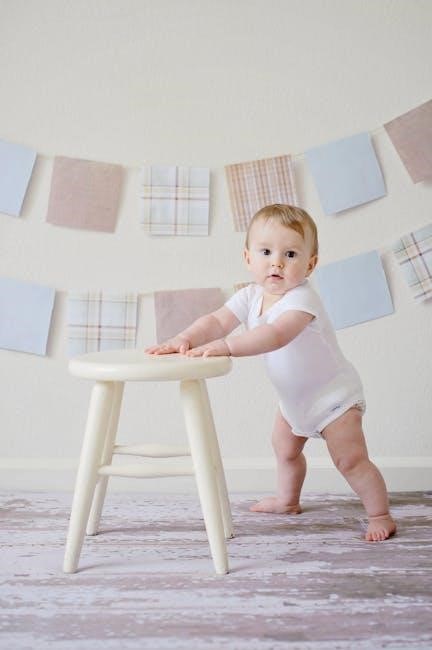Physical Development Activities for 3-5 Year Olds
Engaging physical activities for 3-5 year olds include gross motor exercises like running, jumping, and ball handling, as well as fine motor tasks such as puzzles and art projects. These activities promote coordination, strength, and dexterity, fostering overall development through play-based learning.
Physical development is a cornerstone of early childhood education, forming one of the prime areas in the Early Years Foundation Stage (EYFS). It is as essential as numeracy and literacy, enabling children to engage in meaningful activities that promote health and well-being. For 3-5 year olds, physical development involves refining both gross and fine motor skills, which are crucial for independence and coordination. Activities should be tailored to each child’s developmental stage, ensuring they are challenging yet achievable. This period is vital for building strength, balance, and spatial awareness, laying the foundation for lifelong physical literacy. Parents and educators play a key role in fostering active play, providing opportunities for children to explore and grow through movement-based learning. Regular physical activity, recommended at three hours daily, supports overall development and prepares children for future success.
Importance of Physical Activity for 3-5 Year Olds
Physical activity is vital for children aged 3-5, contributing to their overall health and development; It enhances cardiovascular fitness, strengthens muscles, and improves coordination, laying the groundwork for future physical abilities. Regular movement supports cognitive growth by boosting concentration and creativity. Social skills, such as teamwork and communication, are also developed through interactive play. Additionally, active play helps children manage emotions and reduce stress. Meeting the recommended three hours of daily physical activity, including at least 60 minutes of moderate to vigorous exercise, is crucial for this age group. Parents and educators should encourage a variety of activities to ensure children meet these guidelines, fostering a lifelong love for physical activity and its numerous benefits. Early habits formed during these years significantly impact long-term health and well-being.
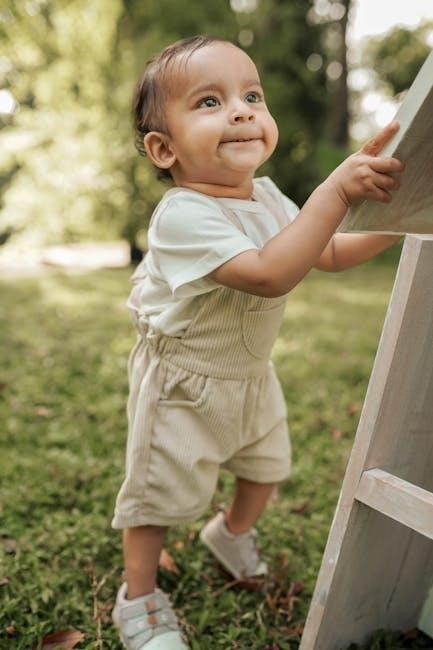
Gross Motor Skills Development
Gross motor skills are foundational for physical abilities, enhancing balance, coordination, and strength in 3-5 year olds. Activities like running and jumping foster independence and mobility through playful engagement.
Locomotor Movements: Running, Jumping, and Hopping
Locomotor movements, such as running, jumping, and hopping, are essential for developing gross motor skills in 3-5 year olds. These activities enhance coordination, balance, and overall physical fitness. Running races or playing tag encourages endurance and speed, while jumping and hopping games improve muscle strength and rhythm. Simple obstacle courses can be designed to incorporate these movements, challenging children to navigate around cones or over small hurdles. For younger children, hopping on one foot or jumping over lines on the floor can build confidence and control. Supervising these activities on soft surfaces, like grass or mats, ensures safety. Parents and educators can encourage these movements through playful, goal-oriented tasks, fostering a lifelong love for physical activity while supporting developmental milestones.
Ball Handling Skills: Throwing, Catching, and Kicking
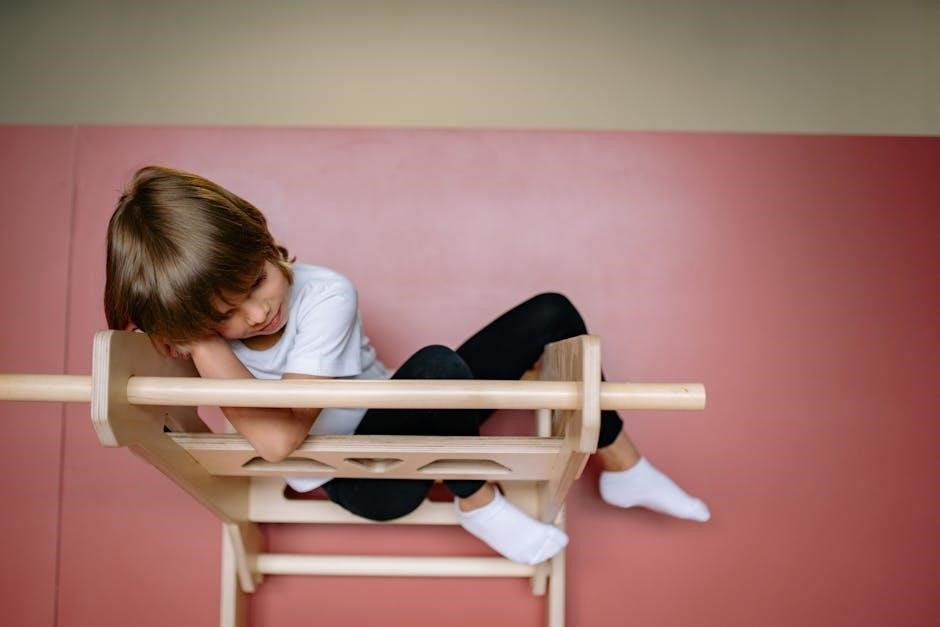
Developing ball handling skills, such as throwing, catching, and kicking, is crucial for improving coordination and motor control in 3-5 year olds. Simple activities like tossing a soft ball into a basket or rolling a ball back and forth encourage precise movements. Balloon volleyball, where children hit a balloon with their hands, is another engaging option. Kicking games, such as rolling a ball across the floor and letting children kick it toward a target, enhance leg strength and accuracy. Parents and educators can use age-appropriate balls and adapt activities to suit individual skill levels. Supervised practice in safe environments helps build confidence and mastery of these essential motor skills, laying the foundation for more complex sports and physical activities in later years.
Balance and Coordination Activities
Balance and coordination activities are essential for refining motor skills in 3-5 year olds. Simple exercises like standing on one foot, hopping, or walking along a straight line enhance stability. Using balance beams or low beams placed on the floor encourages children to test their equilibrium. Activities like tiptoe walking or heel-to-toe marching also improve coordination. Incorporating sensory elements, such as balancing on different textures, can add variety. Obstacle courses with gentle challenges, like stepping over small objects, further develop these skills. These exercises not only improve physical control but also boost confidence. Parents and educators can create simple setups at home or in classrooms to promote these activities, ensuring they are safe and tailored to each child’s ability level. Regular practice helps children master balance and coordination, laying a strong foundation for more complex movements.
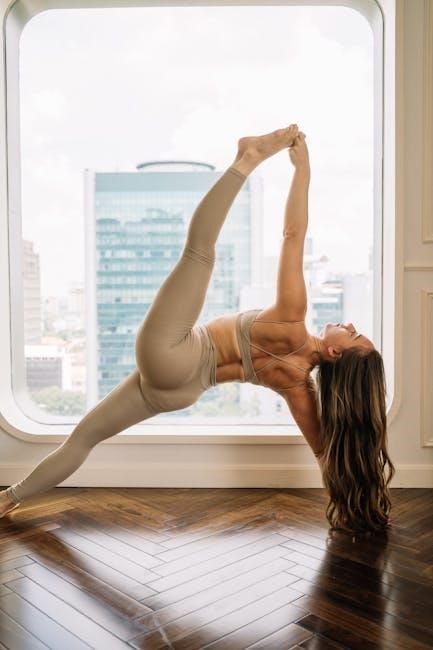
Fine Motor Skills Development
Fine motor skills in 3-5 year olds are refined through activities like drawing, puzzles, and using small tools. These tasks enhance hand-eye coordination and dexterity, preparing children for writing and daily tasks. Play-based exercises with manipulatives, such as beads or playdough, strengthen finger muscles and improve precision. Incorporating art tools, like crayons and scissors, encourages creativity while developing control. Parents and educators can use structured yet engaging exercises to foster independence and skill mastery in young learners. Regular practice with various materials supports the development of essential fine motor abilities. These activities are crucial for academic readiness and lifelong skill development. They lay the groundwork for more complex tasks, ensuring children are well-prepared for future challenges.
Using Art Tools for Dexterity
Using art tools like crayons, markers, scissors, and paintbrushes is an effective way to enhance fine motor skills in 3-5 year olds. These activities require precise finger movements, improving hand-eye coordination and dexterity. Drawing and coloring help children master grip control, while cutting with safety scissors strengthens finger muscles. Playdough manipulation and stamping with sponges or stamps also refine motor precision. Art tools encourage creativity and focus, making skill development enjoyable. Regular practice with these tools prepares children for writing and other tasks requiring fine motor control. Parents and educators can incorporate art-based exercises into daily routines, providing a fun and engaging way to support physical development. These activities are essential for building the foundational skills needed for academic success and everyday independence. They foster confidence and creativity while promoting essential motor abilities. Art tools are a versatile and effective way to enhance dexterity in young children.
Puzzles and Small Object Manipulation
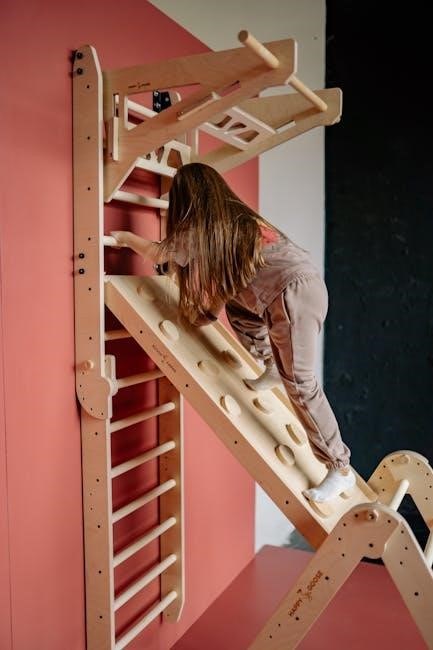
Puzzles and small object manipulation are excellent for refining fine motor skills in 3-5 year olds. Activities like assembling puzzles, sorting small toys, and using pegboards enhance hand-eye coordination and finger dexterity. Children learn to grasp and release objects with precision, improving their ability to handle smaller items like buttons or beads. These tasks also foster problem-solving skills and patience. Using interlocking blocks or stacking toys further develops spatial awareness and manual control. Incorporating small object play into daily routines helps children build the strength and coordination needed for tasks like writing or tying shoes. Adults should provide supervision and guidance to ensure safety while encouraging independence. These activities are both educational and engaging, making them a valuable part of physical development programs for young children. Regular practice with puzzles and small objects can significantly improve motor proficiency and readiness for school.
Dressing and Feeding Skills
Dressing and feeding skills are essential for fostering independence and fine motor development in 3-5 year olds. Activities like zipping, buttoning, and tying shoes help improve hand-eye coordination and finger dexterity. Practicing with simple clothing items or dolls encourages children to master these tasks. Feeding skills, such as using utensils to scoop or pour, enhance precision and control. These activities also promote problem-solving and self-confidence. Providing children with opportunities to dress themselves or feed a stuffed animal reinforces motor skills and readiness for daily routines. Adults should offer guidance and patience, allowing children to learn at their own pace. Regular practice with these tasks helps build the foundational skills needed for more complex activities later in life. Dressing and feeding skills are practical and engaging ways to support physical development in young children.
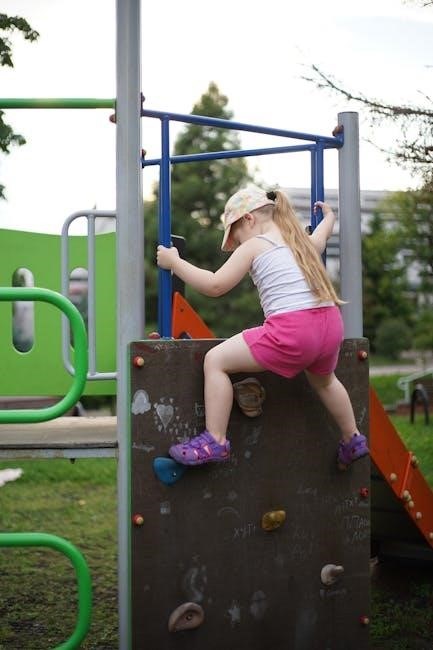
Sensory Play and Physical Development
Sensory play enhances coordination and balance, while tactile activities and sensory bin explorations improve motor skills and creativity in 3-5 year olds.
Tactile Activities for Sensory Integration
Tactile activities are essential for sensory integration, helping children develop touch sensitivity and fine motor skills. Using playdough, sand, or rice encourages exploration and creativity. These activities also improve hand-eye coordination and dexterity, fostering independence and confidence in 3-5 year olds.
Additionally, tactile play enhances sensory processing, allowing children to better understand their environment. Activities like finger painting or sorting textures provide engaging ways to refine motor control and overall physical development through playful learning experiences.
Sensory Bin Explorations
Sensory bin explorations are a fantastic way to engage children in tactile play, promoting sensory integration and fine motor development. Fill bins with rice, beans, sand, water, or pasta, and add small toys or other objects for discovery. These activities encourage children to use their hands to explore and manipulate materials, enhancing their sense of touch and hand-eye coordination.
Adding props like cups, scoops, or funnels can extend play and challenge children to practice pouring and measuring. Sensory bins also foster creativity and curiosity, as children experiment with different textures and sounds. This type of play is not only enjoyable but also supports overall physical and cognitive growth in 3-5 year olds.
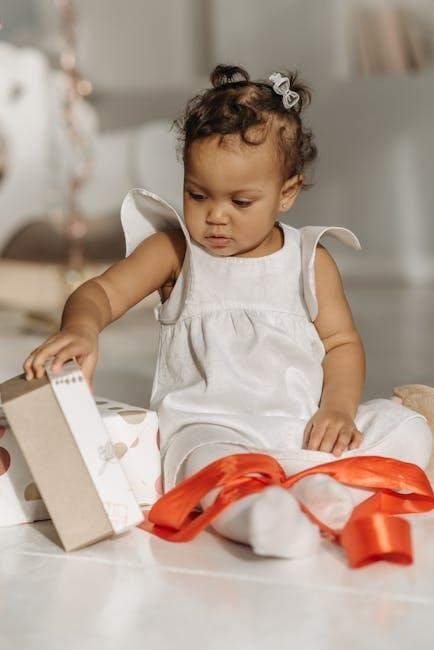
Outdoor Physical Activities
- Tag, hide-and-seek, and chase games promote gross motor skills and teamwork.
- Nature walks and outdoor explorations encourage curiosity and physical exploration.
- Cycling and scooter activities enhance balance, coordination, and cardiovascular health.
Outdoor play provides fresh air, space for movement, and opportunities for social interaction, fostering overall physical and emotional well-being in 3-5 year olds.
Tag, Hide-and-Seek, and Other Chase Games
Tag, hide-and-seek, and chase games are excellent outdoor activities that promote gross motor skills, cardiovascular health, and social interaction in 3-5 year olds. These games encourage running, quick changes in direction, and agility, helping children develop endurance and coordination. Hide-and-seek also enhances problem-solving and strategic thinking as kids learn to find hiding spots or locate others. Chase games foster teamwork and communication, as children often work together to catch or evade each other. These activities are simple yet effective, requiring minimal equipment and maximizing physical engagement. They also provide opportunities for children to practice cooperation and emotional regulation while enjoying fresh air and physical exertion. Including variations like “freeze tag” or “shadow tag” can add complexity and keep the games exciting for young participants. Supervision is recommended to ensure safety and encourage inclusive play.
Nature walks and outdoor explorations are engaging physical activities for 3-5 year olds that combine physical movement with sensory experiences. Walking on uneven terrain improves balance and coordination, while exploring natural environments enhances curiosity and cognitive development. These activities allow children to discover textures, colors, and sounds in nature, promoting sensory integration. Collecting leaves, observing insects, or following trails encourages fine motor skills and hand-eye coordination. Outdoor explorations also foster an appreciation for nature and provide opportunities for social interaction, as children often share observations and insights. Supervised nature walks ensure safety while allowing children to explore freely, making them a valuable addition to early childhood physical development programs. Such activities are both educational and enjoyable, offering a holistic approach to growth and learning. They are ideal for fostering a connection with the environment and promoting an active lifestyle from an early age. Cycling and scooter activities are excellent for developing gross motor skills in 3-5 year olds. These activities enhance balance, coordination, and overall physical fitness. Using tricycles or balance bikes with support helps children progress to independent cycling. Scooters improve leg strength and coordination as kids push off and steer. Both activities promote cardiovascular health and endurance. Safety is crucial, so helmets and knee pads are essential. These activities can be adapted to different skill levels, with younger children starting on stable bikes and progressing to more complex movements. Outdoor spaces like parks or empty parking lots provide ideal settings for these exercises. Incorporating games, such as racing or obstacle courses, adds fun and challenges children to refine their skills. Regular practice fosters confidence and independence, making cycling and scooting valuable physical development tools for young children. Supervision ensures safety while allowing kids to explore and enjoy these engaging activities. Indoor activities like dance parties, obstacle courses, and balloon volleyball promote gross motor skills, coordination, and creativity in 3-5 year olds. These exercises are fun, engaging, and adaptable to home or classroom settings, ensuring active play regardless of weather. Using colorful props enhances sensory engagement and motivation, while simple games encourage teamwork and physical exploration. These activities are perfect for developing strength, balance, and coordination in a safe and controlled environment. Regular indoor play helps children stay active year-round, fostering healthy lifestyles and motor development through enjoyable experiences. Parents and educators can easily incorporate these games into daily routines, providing children with consistent opportunities for physical growth and enjoyment. Dance parties and movement to music are versatile indoor activities that promote physical development in 3-5 year olds. These engaging exercises improve coordination, balance, and rhythm while fostering creativity and self-expression. Children can explore various movements, such as twirling, jumping, or clapping, to upbeat songs. Incorporating simple props like scarves or ribbons adds sensory stimulation and fun. Parents and educators can create themed playlists to encourage imaginative play, such as dancing like animals or acting out song lyrics. Movement to music also enhances spatial awareness and gross motor skills, as children practice moving in different directions and tempos. These activities are ideal for indoor settings, providing an energetic outlet for children to stay active and develop their physical abilities while enjoying music and creativity. Regular dance sessions can also boost confidence and social interaction, making them a valuable part of a child’s daily routine. Indoor obstacle courses are an excellent way to promote physical development in 3-5 year olds, offering a fun and challenging environment for movement. These activities enhance gross motor skills, such as climbing, crawling, and balancing, while improving coordination and problem-solving abilities. Parents and educators can create simple courses using household items like cushions, chairs, and blankets. Include tasks like crawling under a “tunnel,” jumping over “obstacles,” or balancing on one foot. Soft materials like pillows or foam blocks can ensure safety while encouraging creative navigation. Obstacle courses also foster perseverance and teamwork, as children cheer each other on. Regular participation in these activities strengthens physical fitness and builds confidence, making them a great addition to indoor play routines. They are adaptable to various spaces, ensuring active play is possible regardless of weather conditions. Balloon volleyball is a delightful indoor activity that enhances physical development in 3-5 year olds. Using a balloon and a makeshift net or broom, children practice hitting and tracking the balloon, improving hand-eye coordination and fine motor skills. This game encourages teamwork, laughter, and active participation. Other indoor games like “Simon Says” or “Red Light, Green Light” also promote physical movement and listening skills. These activities are ideal for developing coordination, balance, and self-control in young children. They can be adapted to suit different energy levels and spaces, making them versatile for home or classroom settings. Incorporating such games into daily routines fosters a love for physical activity and supports overall development in a fun and engaging way. Ensure safe environments by checking equipment, supervising activities, and teaching proper techniques. Dress children in appropriate clothing and remove hazards to prevent injuries during play. Ensure adult supervision during all physical activities to prevent accidents. Provide a safe environment by removing hazards and using soft flooring. Teach children to warm up before play and stay hydrated. Encourage proper use of equipment and dress them in comfortable, safe clothing. Demonstrate safety rules and techniques to avoid injuries. Monitor weather conditions for outdoor activities and ensure children understand basic safety guidelines. Regularly inspect toys and equipment for damage. Encourage teamwork and kindness to reduce the risk of conflicts. Teach children to listen to their bodies and rest when needed. Prepare children physically and mentally for activities with proper instructions and demonstrations. Foster a culture of safety and responsibility during play. Always have a first aid kit nearby and be prepared for emergencies. Ensure adult supervision at all times during outdoor play to prevent accidents. Check the play area for hazards like sharp objects or uneven surfaces. Use proper equipment, such as helmets for cycling or scooting. Apply sunscreen and ensure children wear hats and weather-appropriate clothing. Teach children to stay within designated play zones and avoid traffic. Ensure playground equipment is age-appropriate and well-maintained. Encourage children to wear shoes for protection and avoid playing near water without adult supervision. Teach children to recognize and avoid potential dangers, such as hot surfaces or sharp plants. Carry a first aid kit and be prepared for emergencies. Ensure children stay hydrated and take breaks in shaded areas. Foster a sense of awareness and responsibility in children while they explore and play outdoors. Creating a safe indoor environment for 3-5 year olds involves removing hazards and ensuring proper supervision. Clear the play area of sharp objects, fragile items, and electrical cords. Use soft flooring or mats to cushion falls. Secure furniture and heavy objects to prevent tipping. Ensure windows and doors are safely out of reach. Teach children to handle toys and materials carefully to avoid accidents. Supervise activities involving small objects or potential choking hazards. Store cleaning supplies and medications in locked cabinets. Encourage children to move safely, avoiding overexertion or rough play. Teach them to respect personal space and use indoor toys appropriately. Ensure proper lighting to prevent tripping and install safety gates at stairs. Always supervise children during indoor play to address any potential risks promptly. Parents play a crucial role in fostering physical development by encouraging active play, creating safe environments, and participating in activities that promote motor skills and overall well-being in children. Encouraging active play at home is essential for fostering physical development in 3-5 year olds. Parents can create a safe, engaging environment by setting up indoor obstacle courses, dance parties, and balloon games. Simple activities like hopping, jumping, and crawling enhance gross motor skills, while puzzles and art tools improve fine motor dexterity. Incorporating daily routines, such as walking or cycling, promotes physical fitness and coordination. Parents should also limit screen time and encourage outdoor exploration, allowing children to discover nature and develop sensory integration. By participating alongside their children, parents model active behavior and reinforce the joy of movement. Consistency and creativity are key to making physical activity a fun, integral part of daily life, ensuring children meet the recommended three hours of active play per day. Supporting both outdoor and indoor activities is crucial for the holistic physical development of 3-5 year olds. Outdoor play, such as tag, hide-and-seek, and nature walks, fosters gross motor skills and exploration. Indoor activities like dance parties, obstacle courses, and balloon volleyball promote coordination and creativity. Parents and educators should ensure a safe environment by supervising play and providing age-appropriate equipment. Encouraging children to engage in a variety of activities helps build endurance and adaptability. Incorporating sensory play, such as tactile bins or art projects, enhances fine motor skills and sensory integration. By balancing outdoor and indoor experiences, caregivers can cater to different weather conditions and children’s preferences, ensuring consistent opportunities for active play and skill development. This balanced approach supports physical growth, social interaction, and overall well-being in young children.Nature Walks and Outdoor Explorations
Cycling and Scooter Activities
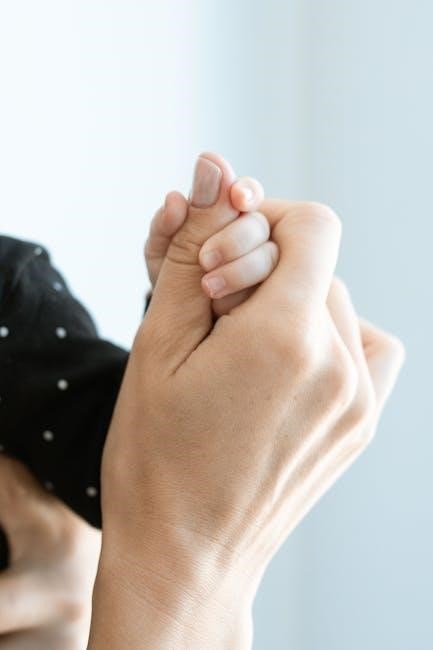
Indoor Physical Activities
Dance Parties and Movement to Music
Indoor Obstacle Courses
Balloon Volleyball and Other Indoor Games
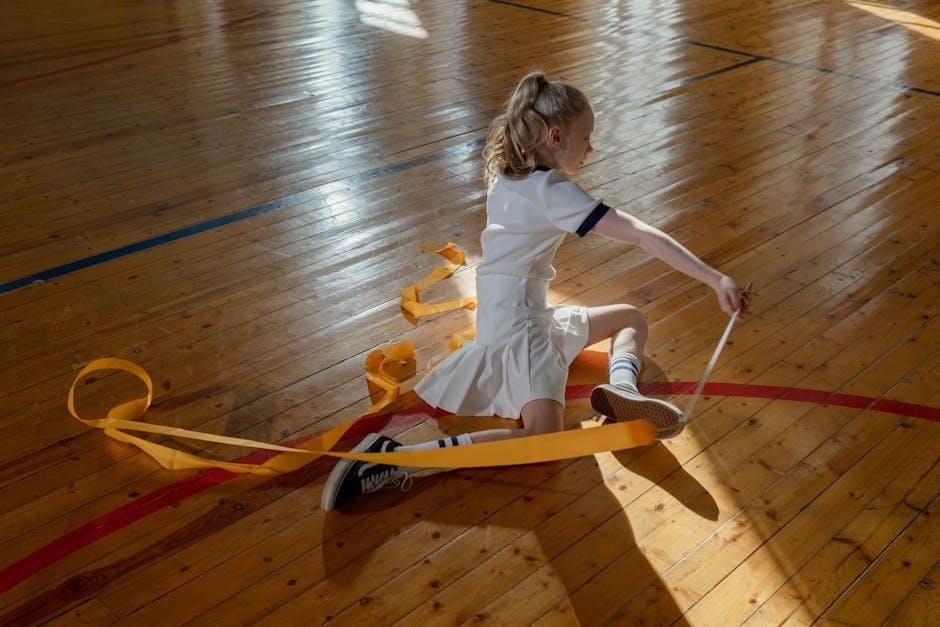
Safety Considerations
General Safety Tips for Physical Activities
Outdoor Safety Measures
Indoor Safety Tips
Parental Involvement
Encouraging Active Play at Home
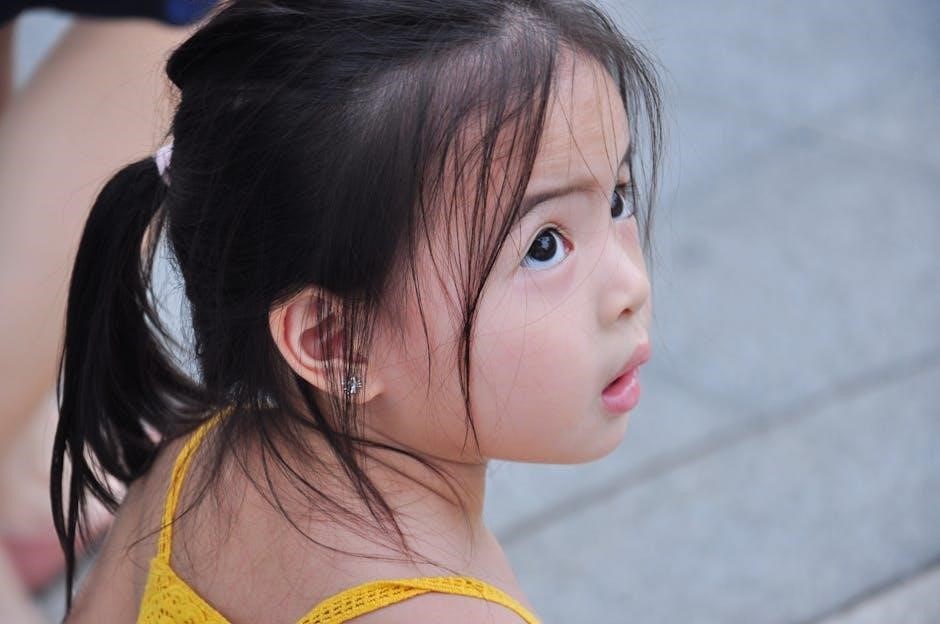
Supporting Outdoor and Indoor Activities
